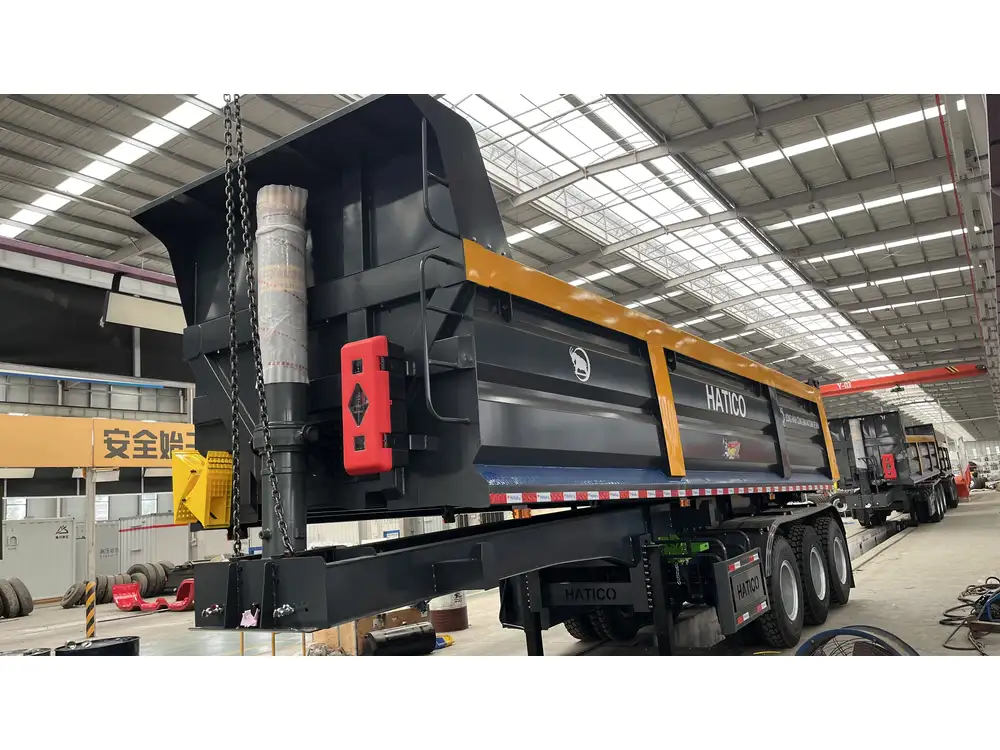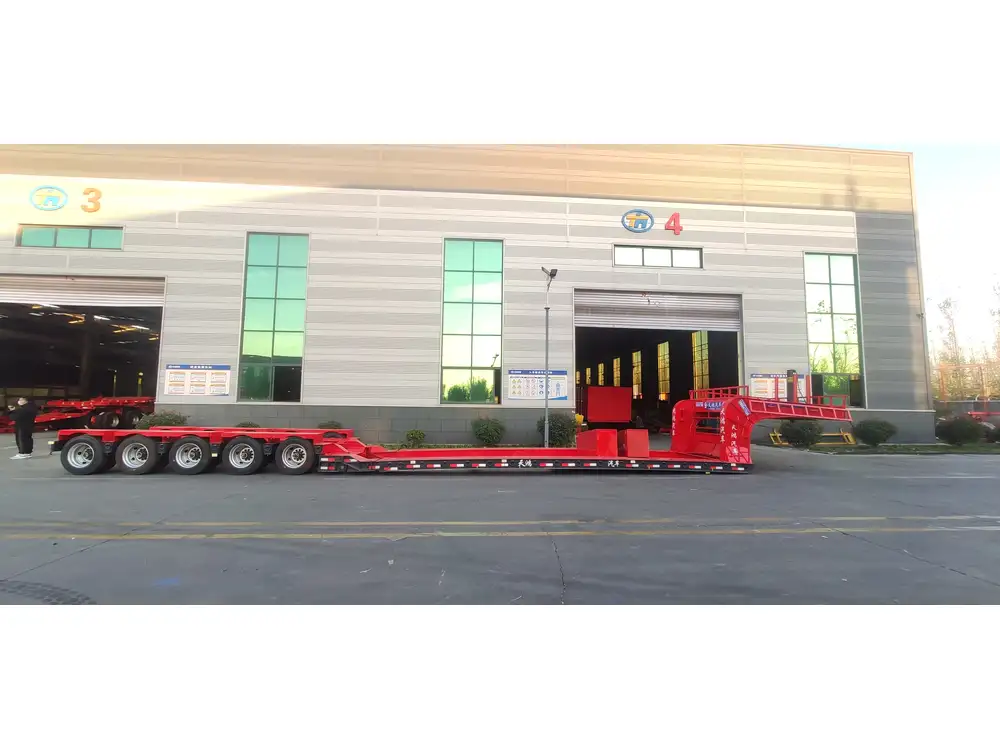When we delve into the world of heavy trucking, the terminology becomes as intricate as the machinery itself. One particularly fascinating term that often arises is “semi.” This term, frequently used to describe a tractor trailer truck, may evoke curiosity. At first glance, it might seem like a simple nomenclature barrier, but understanding why a tractor trailer truck is called a semi reveals a rich tapestry of history and engineering.
The Origins of the Term “Semi”
The phrase “semi-trailer” offers a window into the construction and design of these vehicles. A semi-trailer is distinct from other types of trailers because it lacks a front axle. Instead, it is designed to be coupled with a tractor unit, which assumes much of the trailer’s weight. This combination creates a vehicle system that is both maneuverable and efficient for transporting goods over long distances.
Key Historical Developments
Early Design Influences: The roots of the semi-trailer can be traced back to the early 1900s when motorized vehicles began taking over transportation tasks previously dominated by horse-drawn carriages. The need for larger loads led to innovations that eventually culminated in the modern semi-trailer.
Technological Advancements: Innovative designs and engineering upgrades over the decades have revolutionized semi-trailers’ construction, leading to optimized fuel efficiency and load management.
Terminology Evolution: The term “semi” originates from the Latin word “semi,” meaning half. In this context, it refers to the trailer being “half” supported by the tractor unit, hence the creation of a stable and dynamic transport system.

Understanding the Mechanics of a Semi-Trailer
Anatomy of a Semi-Trailer
To fully appreciate why we use the term “semi,” we must scrutinize the anatomy of the semi-trailer truck.
| Component | Description |
|---|---|
| Tractor Unit | The front portion that houses the engine and driver. It provides the pulling power. |
| Semi-Trailer | Attached to the tractor, it’s designed to bear the load and has no front axle. |
| Fifth Wheel | A coupling device allowing the tractor to connect with the semi-trailer securely. |
| Kingpin | A pivotal part on the semi-trailer that fits into the fifth wheel of the tractor. |
The Load Distribution Dynamics
Understanding how weight distribution works can clarify the advantages of using a semi-trailer.
- Front Load: The tractor unit carries a portion of the semi-trailer’s weight, which leads to enhanced traction, especially when climbing hills or making sharp turns.
- Rear Suspension: The semi-trailer utilizes sophisticated air suspension systems that are crucial for stability and ride comfort while on the road.
- Articulation: The semi-trailer allows for a degree of movement at the connection point, enabling an agile maneuvering capability that is vital for navigating urban environments and tight spaces.

Advantages of Using a Semi-Tractor Trailer
Utilizing a semi-trailer truck configuration comes with several notable benefits:
Cost-Effectiveness
- Increased Payload: The design enables transportation of heavier loads compared to traditional configurations, optimizing fuel costs per ton-mile.
- Reduced Manufacturing Costs: Since the semi-trailer does not have to bear the costs associated with a front axle, manufacturers can produce these trucks more efficiently.
Operational Flexibility
- Versatility: Semi-trailers can be easily swapped, allowing logistics companies to quickly adapt to various cargo requirements.
- Enhanced Maneuverability: The articulation provided by the fifth wheel coupling allows for max maneuverability without sacrificing load stability.

Safety Features
- Braking Systems: Most modern semi-trailers incorporate advanced braking systems, including anti-lock and electronic stability controls, enhancing safety during transit.
- Cargo Security: The semi-trailer’s design often allows for secure load placement, minimizing the chance of shifts during transit.
Common Misconceptions about Semi-Trailers
Despite their prevalence in the transportation landscape, semi-trailers frequently fall victim to misconceptions. Addressing these can foster a clearer understanding.
Misconception 1: Semi-Trailers Are Just for Heavy Loads
While semi-trailers are indeed designed for significant loads, they do not exclusively cater to them. They can transport anything from automotive parts to perishable goods. Their design scales effectively for various applications.

Misconception 2: All Trailers with Axles Are Semi-Trailers
This is inaccurate. A key distinguishing feature of a semi-trailer is its lack of a front axle. Other types of trailers, such as “full trailers,” do feature axles at both the front and rear, providing a different operational dynamic.
Misconception 3: All Trailers Are Interchangeable
While one might think all trailers can serve a similar purpose, the specific design and utilization define their functionality. Each trailer type excels in particular situations. In comparison:
| Trailer Type | Key Characteristics | Best Uses |
|---|---|---|
| Semi-Trailer | No front axle; attaches via fifth wheel | Long-haul trucking |
| Full Trailer | Has front and rear axles; self-supporting | Shorter distances; stable loads |
| Gooseneck Trailer | Connects via a hitch over the truck bed | Heavy loads; more maneuverability |
| Flatbed Trailer | Open design allows for easy loading and unloading | Oversized cargo; machinery transport |
The Future of Semi-Trailer Trucks
As we navigate through ever-evolving transportation needs, the semi-trailer truck is on the brink of a transformative period. The future of semi-trailers is likely to involve:

Innovations in Technology
- Autonomous Driving: Companies are investing in self-driving technology that could revolutionize the efficiency of semi-trailer logistics.
- Electric Semi-Trucks: The push for sustainability means innovation in electric semi-trailer designs that promise reduced emissions and lower operational costs.
Changes in Regulations
As environmental concerns mount, we expect regulations that mandate greater fuel efficiency and lower emissions, which could reshape the manufacturing landscape for semi-trailers.
Enhanced Safety Features
The future could see even further advancements in safety technologies that work to minimize accidents and improve overall transport security.

Conclusion: The Significance of the Term “Semi”
To conclude, understanding why a tractor trailer truck is referred to as a “semi” requires us to appreciate its construction and the historical context behind its name. The term emphasizes the unique coupling mechanism that defines its functionality and benefits. As we look toward the future, it is clear that semi-trailer technology will continue to evolve, contributing to improved transportation methods and serving the ever-growing logistics needs globally.
In the grand landscape of commercial trucking, the semi-trailer stands not just as a vital tool for goods transportation but also as a symbol of engineering prowess and innovation. Thus, understanding its definition and origins enhances our appreciation for the trucks that carry everything from everyday goods to critical supplies to the communities we serve.



